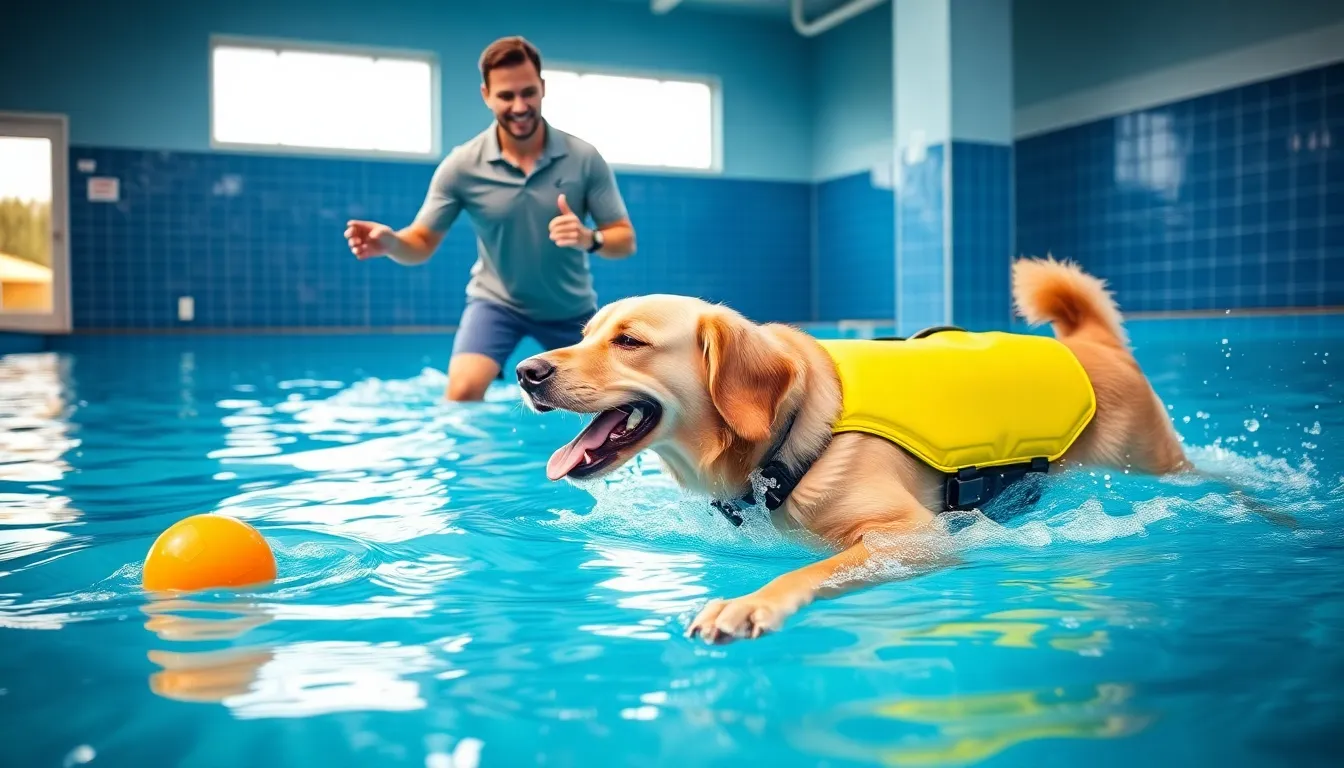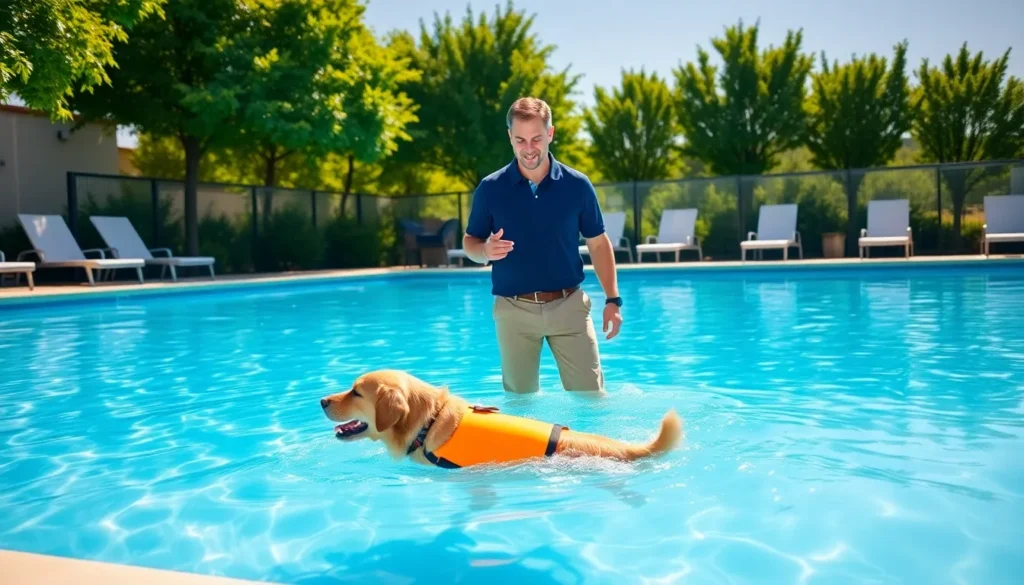Table of Contents
ToggleEvery dog has its day, and for some lucky pups, that day involves splashing about in a pool. Teaching your furry friend how to swim not only helps them cool off during those hot summer days, but it also comes with a host of benefits that will make tails wag with delight. From improving physical fitness to boosting confidence, dog swimming lessons are a fantastic way to spend quality time together. Here’s a swim-tastic guide to help your pup make a splash in the water, without sinking into despair.
Dog Swimming Lessons

Swimming is much more than just an enjoyable activity for our four-legged friends. It promotes overall health and well-being in ways that few other exercises can match.
Physical Health Improvements
Engaging in regular swimming sessions can lead to remarkable improvements in your dog’s physical health. First off, it’s a great low-impact exercise that’s easy on joints, making it ideal for dogs of all ages, especially senior dogs or those recovering from injuries. Swimming builds muscle tone, enhances cardiovascular endurance, and can even aid in weight management. So, while your dog is having a ball splashing about, they’re also burning calories and staying fit.
Mental Stimulation And Confidence Building
On top of the physical perks, swimming provides mental stimulation that keeps a dog’s mind sharp. Navigating through water challenges dogs, requiring them to think about their movements and develop coordination. This experience can significantly boost their confidence as they learn to navigate different environments. A confident pup is often a happier pup, and that’s a win-win in any dog owner’s book.
Preparing Your Dog For Swimming
Before diving into the nearest pool or lake, it’s essential to ensure that your dog is prepared for the big splash.
Assessing Your Dog’s Readiness
Not all dogs are natural-born swimmers. Before getting started, assess your dog’s comfort level with water. Some breeds, like retrievers, may seem eager, while others might be less enthusiastic. It’s crucial to respect each dog’s unique personality. Introduce your pup to shallow water gradually. If they show signs of anxiety, like turning tail and running back to shore, give them some time and patience.
Choosing The Right Environment
The swimming environment can play a significant role in your dog’s experience. Look for calm, shallow water without strong currents or waves. A fenced backyard pool or a quiet lake is often ideal. Avoid overly crowded spots where your dog might feel overwhelmed. You want them to enjoy the experience, not feel stressed or anxious due to noise and chaos.
Swimming Techniques For Dogs
Now that your dog is ready to hit the water, it’s time to work on their swimming skills. Whether they’re just starting out or looking to refine their techniques, having a solid foundation is essential.
Basic Swimming Skills
Start with the basics. Encourage your dog to paddle around using their legs. You can initiate this by gently supporting them in the water. Most dogs will instinctively start to paddle and float. Consider utilizing a dog flotation device if they seem particularly uneasy. Instill confidence by rewarding them with praise and treats during their first swims. Positive reinforcement will always be helpful as they learn.
Advanced Techniques And Safety Precautions
Once your dog has mastered basic swimming, you can work on more advanced techniques, such as turning or even retrieving objects from the water. But, keep safety at the forefront. Always supervise them during swimming sessions and ensure they wear a life vest when necessary, especially in deeper water. Having a first aid kit nearby can give peace of mind amidst the splashes and fun.
Finding Professional Swimming Classes
Sometimes, it’s beneficial to seek professional help for your dog’s swimming journey. Finding the right swimming class can enhance the experience for both you and your furry friend.
What To Look For In A Class
When searching for swimming lessons, prioritize classes that emphasize fun and safety. Look for programs that cater specifically to dogs and use professional trainers. The best classes should be conducted in a safe environment, ensuring dogs can splash around without hazards. Consider asking for recommendations from fellow dog owners or checking online reviews for insights on local options.
Understanding Instructors’ Qualifications
Before signing up, take a moment to evaluate the instructors. Those who are certified in canine training, as well as CPR for pets, will further reassure you of their competency. Instructors should exhibit patience and understanding, as well as the ability to handle various dog breeds and temperaments. Their expertise can immensely influence your dog’s comfort and enjoyment.
Tips For A Successful Swimming Experience
To ensure a positive swimming experience for your dog, consider following these practical tips.
Building Positive Associations With Water
From the get-go, help your dog form a positive association with water. Start by letting them explore the area without forcing them in. Use toys, treats, and companionship to encourage them to step closer to the water’s edge. Make each excursion fun. Less pressure means more tail wags.
Monitoring Your Dog’s Comfort And Safety
Throughout the experience, keep a close eye on your dog’s comfort level. If they seem tired or anxious, it’s perfectly acceptable to call it a day. Regular breaks allow dogs to recharge, preventing them from becoming overwhelmed. Hydration is just as important, make sure fresh water is readily available, especially on warm days.




